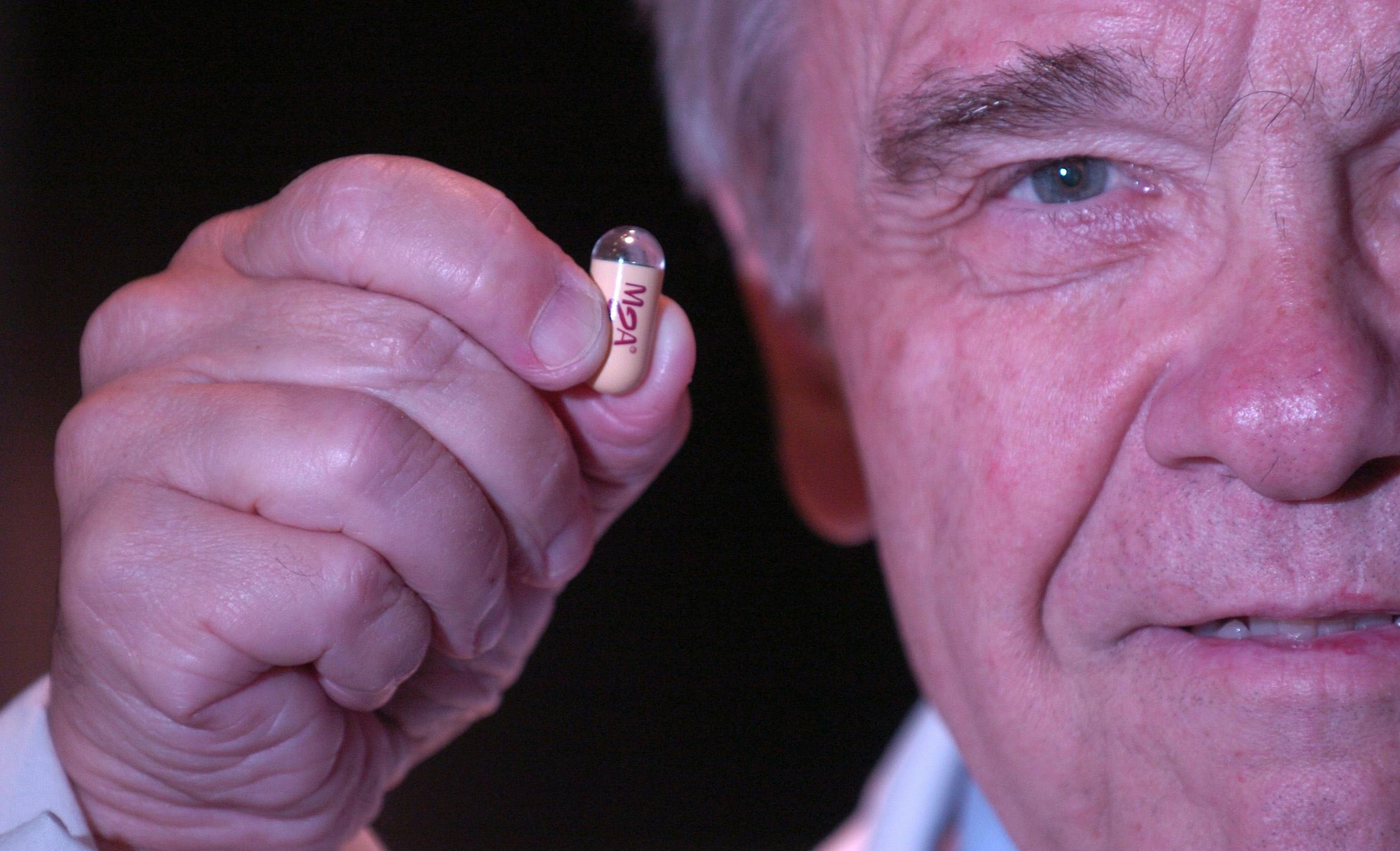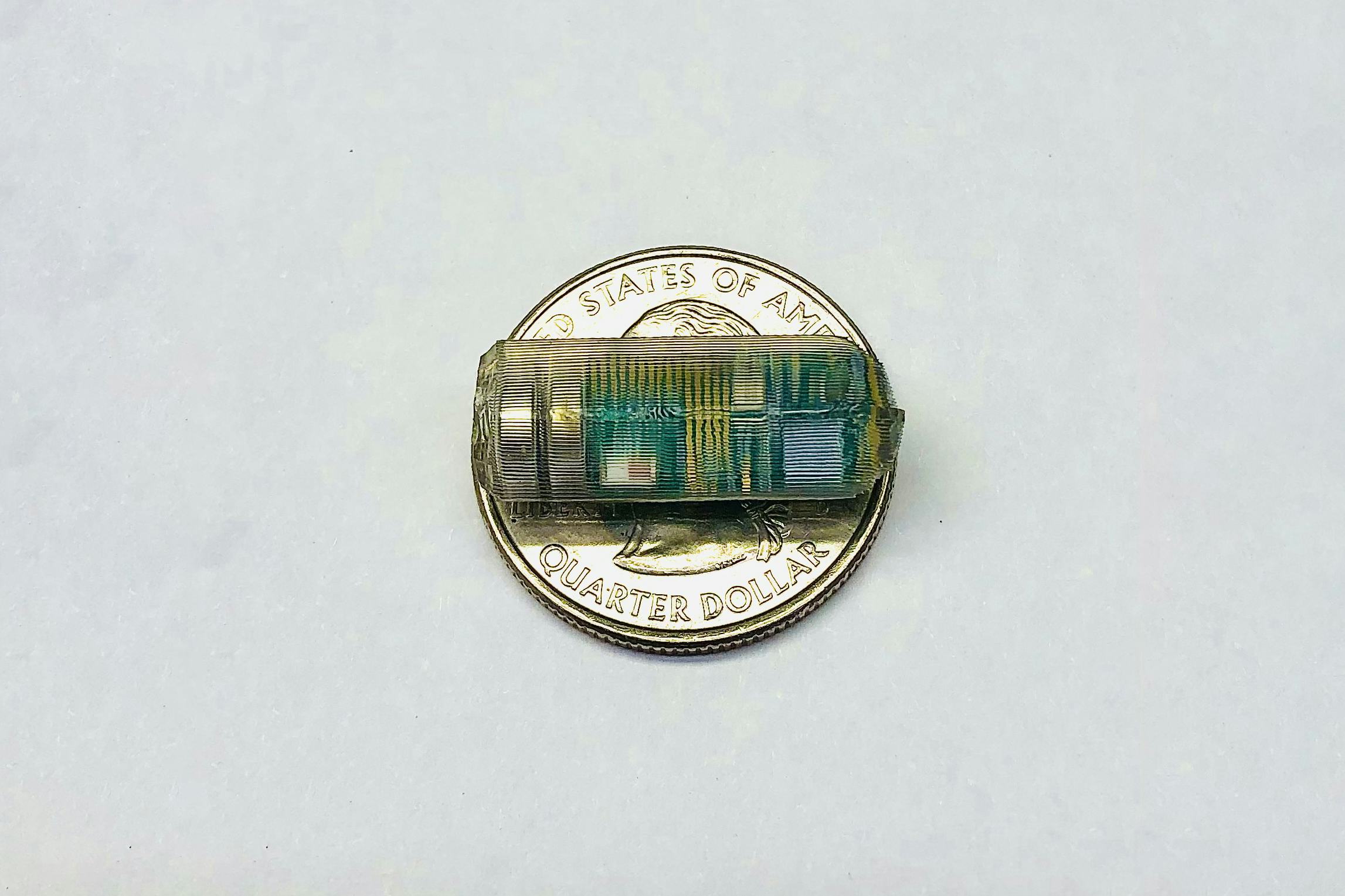
In the 1966 sci-fi film Fantastic Voyage, a group of scientists ventures inside the body of an injured colleague to save him from a life-threatening blood clot.
They get a front-row seat to the microscopic world within us containing wonders like antibodies, cavernous blood vessels, and bubbles of oxygenation.
Today, while we can’t Ms. Frizzle ourselves for medical purposes, we do have tools that provide doctors a close look inside the body. This is especially true for the twists and turns of the lengthy gastrointestinal tract. Clinicians can thread a camera down a patient’s mouth (or up their butt) or use X-ray radiation during a CT scan. They can even serve patients radioactive scrambled eggs to accurately time a meal’s travels.

But what if there was another way to see inside the digestive system that avoids the need to shove cameras down throats or have someone eat isotopes?
To that end, engineers at MIT and Caltech have developed an ingestible sensor that navigates through the gastrointestinal tract. Based on tests with pigs, the team says it could give clinicians real-time information on a patient’s digestion thanks to sensors guided by an electromagnetic field, according to a study published Monday in the journal Nature Electronics.
This pill-sized device may one day allow diagnosis and monitoring of digestive or gastrointestinal disorders with a process that’s relatively comfortable for patients — best of all, it could be done right from home.
“I personally look at this and see tremendous opportunities for other surgical applications where you’re tracking things inside the body,” Mark Rentschler, a professor of mechanical engineering at the University of Colorado Boulder who wasn’t involved in the study, tells Inverse.
Years in the making
Scientists planted the seeds of the idea several years ago, when MIT and Caltech groups joined forces to brainstorm new diagnostic medical devices, Giovanni Traverso, a gastroenterologist at Brigham and Women’s Hospital in Boston and co-author of the new study, tells Inverse.
These scientists knew they wanted to concoct a noninvasive system that can track the movement of an object through the body.
This wasn’t a new idea: Doctors have used swallowable diagnostic devices for the last few decades. For instance, a medical technology company now called Medtronic debuted its video capsule endoscopy in 2000. This relatively common tool allows clinicians to visualize the inside of the digestive system using a tiny wireless camera.

And in 2006, the U.S. Food and Drug Administration approved the SmartPill, an ingestible capsule that measures pressure, pH, temperature, and transit time as it passes through a person’s gastrointestinal tract.
Still, the medical field needs a gizmo that offers detailed mapping of the gastrointestinal tract while tracking the capsule’s real-time location, Traverso says. This sort of data is crucial for diagnosing and monitoring gastrointestinal disorders like gastroparesis, or delayed gastric emptying, where nerve damage can cause food to linger in the stomach.
“It’s really about offering a potential solution and lowering the barrier of diagnosis or follow-up, and having tools that enable that,” he says.
Harnessing the power of electromagnetism
The sensor looks like a clear vitamin pill — about the width of a quarter — that holds tiny electronics and battery components. The clear covering, Traverso says, is made of a body-friendly silicone and contains a system that senses an electromagnetic field generated by a coil, or secondary sensor, stuck somewhere outside the body, such as on the skin.
As the ingested sensor moves through the gastrointestinal tract, it picks up on the surrounding magnetic field and measures its distance relative to the sensor outside — this reveals the sensor’s precise location. That data then travels via Bluetooth to another device for analysis, such as a hospital computer or a patient’s phone.
This comes with a challenge: The outside coil has to remain in the same position otherwise the location data on the ingested sensor wouldn’t be accurate. In this study, the scientists stuck the external coil on the pigs’ skin like a sticker.

But for future testing in people, Traverso says the team could put the external coil in the front pocket of a jacket or a backpack for continuous monitoring on the go. For intermittent snapshots, the coil could sit on a toilet seat or a wall.
So how well does this ingestible sensor work? In the pig experiments, the two-sensor set-up gave accurate measurements (a resolution of about two millimeters, which is higher than resolutions achieved by any other magnetic field-based sensor).
But it was difficult to maintain high accuracy and resolution within the large animal’s anatomy — preliminary experiments had involved mice and lab environments simulating the gastrointestinal tract — and the researchers had to extend the device’s battery life. But the sensor’s measurements landed within a range of about five to 10 millimeters to those captured by an X-ray.
Switching up patient care
Right now, the MIT-Caltech team’s ingestible sensor is just a proof-of-concept. But Traverso hopes that in the future, it could transform the way clinicians manage gastrointestinal disorders and understand how they impact someone’s daily life.
“When we’re in the hospital, the activities we’re involved in are very different. In fact, we tend to move less,” he says. “Having tools that allow us to essentially look at how things are working during our [daily] activities give us a different window in how our bodies work in the context of the ones we’re usually living in.”
For now, the team has some kinks to work out and further questions to explore. For instance, layers of fat, muscle, or blood create a distance between the two sensors and may weaken signaling (in this study, signal strength decreased beyond two inches).

Based on someone’s individual anatomy, people could have at least four to five inches between their skin and the internal device, Rentschler says. This would make it difficult to get a good read of the internal sensor’s location continuously, not to mention capturing images in real time.
He suggests that the team could incorporate more powerful magnets — but that may pose a problem for individuals with any sort of metallic implants.
In fact, this device might not work for all patients with gastrointestinal disorders, such as individuals with diverticulosis who may have small bulges in their digestive tracts that could pose an obstacle, according to Rentschler and Traverso.
Pill cameras currently on the market get lodged in the GI tract around two percent of the time, but they can sometimes break free, Rentschler says. Still, he notes that a small percentage of mishaps can add up when hundreds of thousands of people ingest these devices.
Traverso’s band of MIT and Caltech engineers plan to test out their sensor in humans at some point down the road — until then, it’s either a camera down your throat or radioactive scrambled eggs.







